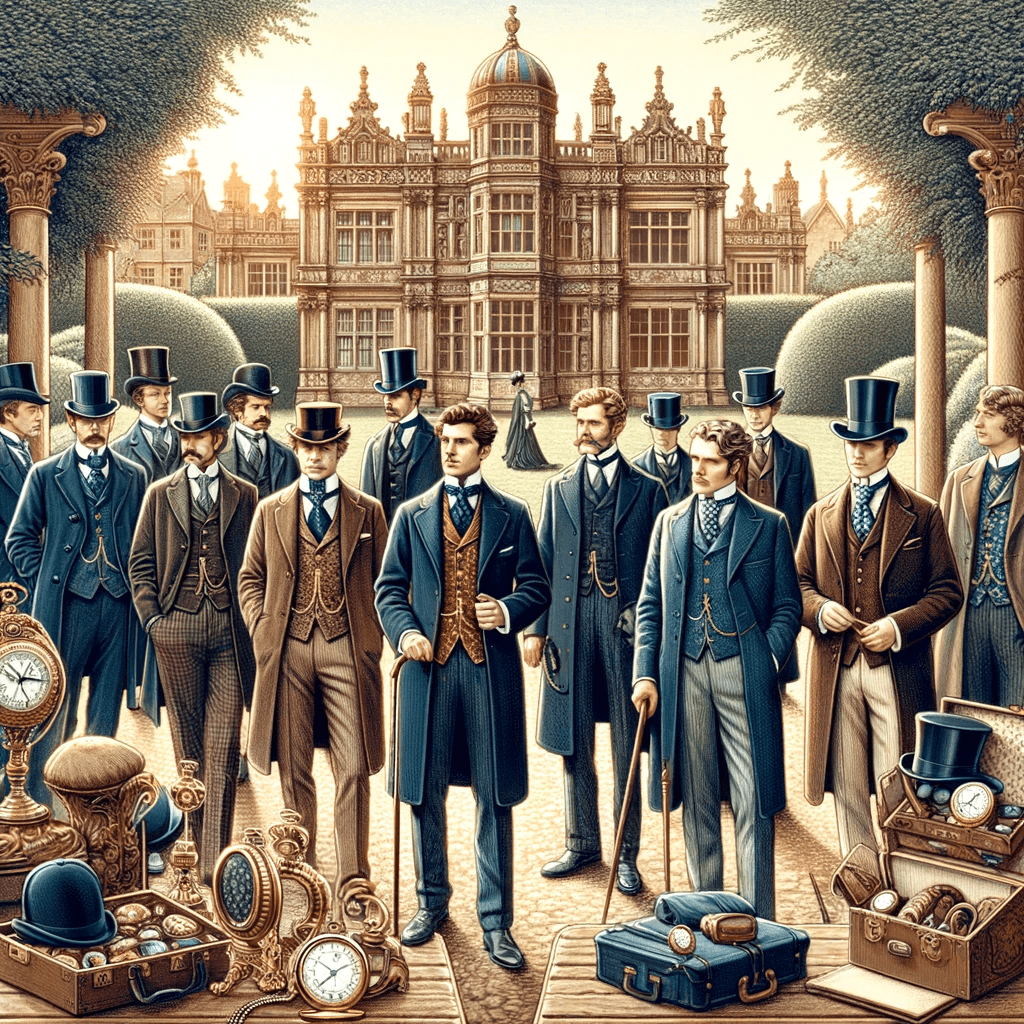
Victorian men’s fashion, spanning the reign of Queen Victoria from 1837 to 1901, stands as a testament to sartorial elegance and refinement. This period witnessed a profound evolution in men’s clothing, reflecting shifts in societal norms, technological innovations, and the changing tastes of gentlemen. In this exploration, we delve into the distinctive elements and styles that defined Victorian men’s fashion, offering a captivating glimpse into a bygone era of sophistication and style.
The Foundation: Shirts and Undergarments
At the heart of every Victorian gentleman’s wardrobe were the foundational pieces—shirts and undergarments. Shirts crafted from fine linen or cotton boasted high, stiff collars that often required the support of collar stays to maintain their distinguished posture. These shirts, typically plain with occasional subtle patterns or pleats, formed the base upon which the rest of the ensemble would be built.
Underneath these outer layers, Victorian men adorned themselves with linen or cotton undershirts and drawers, ensuring both comfort and a polished silhouette. In colder climates, long johns or combinations, one-piece garments enveloping the torso and legs, provided essential warmth while maintaining the impeccable lines of their attire.
The Suit: Emblem of Status and Elegance
The suit emerged as the quintessential symbol of Victorian masculinity, embodying both social status and refined taste. Early in the era, the frock coat reigned supreme—an elegant knee-length garment crafted from luxurious wool, distinguished by its fitted waist and flared skirt. This coat exuded authority and grace, making it the preferred choice for formal engagements and business affairs alike.
As the Victorian age progressed, the morning coat, also known as the cutaway, ascended in popularity. Characterized by its curved front that gracefully tapered away at the waist, the morning coat epitomized daytime elegance and sophistication. By the latter part of the century, the lounge suit emerged as a more relaxed yet equally distinguished alternative. Comprising a shorter, single-breasted jacket paired with matching trousers and a waistcoat, the lounge suit laid the groundwork for the modern business attire we recognize today.
Waistcoats and Trousers: Detail and Distinction
Waistcoats, or vests, served as indispensable elements of Victorian men’s fashion, adding layers of complexity and refinement to their ensembles. Often fashioned from sumptuous fabrics such as silk or brocade, these waistcoats featured intricate patterns and designs that contrasted with the more subdued tones of their suits. Double-breasted varieties were particularly favored, some boasting watch pockets that epitomized both practicality and elegance.
Trousers, or “pantaloons,” evolved alongside their upper counterparts, starting as tightly fitted garments and gradually transitioning to a more relaxed fit as the century unfolded. Typically high-waisted and crafted from wool or cotton, these trousers were secured with suspenders, as belts had not yet gained widespread popularity. Their tailored appearance complemented the overall aesthetic of Victorian men’s fashion, ensuring a cohesive and distinguished silhouette.
Accessories: The Art of Personal Expression
Accessories played a pivotal role in Victorian men’s fashion, serving as the finishing touches that elevated an outfit from ordinary to extraordinary. Cravats, adorned with intricate knots and folds, were favored during the early Victorian era for their elegance and formality. Over time, neckties and bow ties emerged as more streamlined alternatives, offering a blend of modernity and sophistication that resonated with changing tastes.
Headwear served as both a practical necessity and a symbol of social standing. Top hats, reserved for formal occasions, epitomized elegance and refinement, while bowler hats became a staple of everyday attire, embodying a more practical yet equally stylish choice. Accessories such as gloves, pocket watches suspended from chains, and polished walking sticks further underscored a gentleman’s attention to detail and adherence to societal conventions.
Evening Wear: A Study in Formality
For formal evening engagements, Victorian gentlemen embraced the rigors of white tie attire—a pinnacle of elegance and formality. This attire featured a black tailcoat with its distinctive curved tails, complemented by a crisp white waistcoat and shirt adorned with a wing collar. A white bow tie, meticulously tied to perfection, added a touch of sophistication, while black trousers with satin stripes down the sides completed the ensemble. Patent leather shoes and pristine white gloves provided the finishing touches, ensuring a flawless presentation that adhered to the highest standards of Victorian etiquette and style.
Conclusion
Victorian men’s fashion epitomizes an era characterized by elegance, refinement, and an unwavering commitment to sartorial excellence. From the foundational elements of crisp shirts and meticulously tailored suits to the intricate details of waistcoats, trousers, and accessories, every aspect of Victorian attire reflected the societal values and aspirations of the 19th century. By delving into the unique elements and styles that defined Victorian men’s fashion, we gain a deeper appreciation for the craftsmanship, sophistication, and enduring legacy of a bygone era.